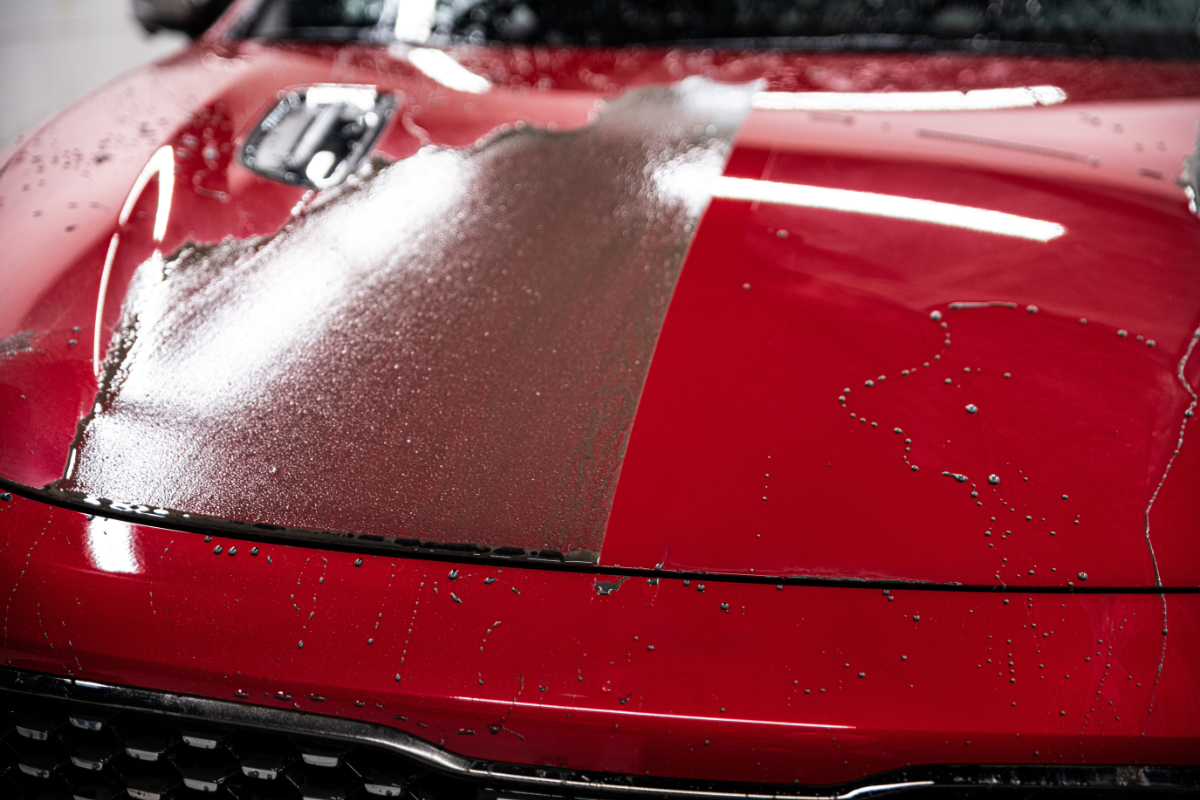Just How Ceramic Coating Philadelphia Improves Your Vehicle's Luster and Protection
Just How Ceramic Coating Philadelphia Improves Your Vehicle's Luster and Protection
Blog Article
Why Ceramic Coating Is the Ultimate Option for a Remarkable Complete
Ceramic covering has actually emerged as a leading solution for those looking for a perfect coating for their vehicles, thanks to its remarkable durability and protective features. What aspects really established ceramic covering apart?
What Is Ceramic Finish?

When applied correctly, ceramic covering produces a hydrophobic surface that repels water and dust, making it much easier to cleanse and keep. Unlike traditional waxes or sealants, which commonly use short-term security, ceramic finishes can last for a number of years, depending on the product quality and application method. The process of using ceramic coating calls for careful prep work, consisting of extensive cleaning and occasionally paint adjustment, to guarantee optimal bonding and efficiency.
Ceramic layers are not limited to automotive surface areas; they can additionally be used on various materials, consisting of glass, steel, and plastics, providing a flexible option for boosting defense. On the whole, ceramic layer represents a substantial improvement in surface defense modern technology, incorporating both aesthetic and functional benefits for a variety of applications.
Advantages of Ceramic Coating
While several surface protection alternatives exist, the advantages of ceramic covering attract attention because of its distinct buildings and lasting performance. Among the main benefits is its extraordinary toughness. Ceramic Coating Philadelphia. Unlike typical wax or sealants that require regular reapplication, ceramic layers offer a durable layer that can last for a number of years, substantially reducing maintenance initiatives
One more significant advantage is improved defense against environmental contaminants. Ceramic coatings develop a hydrophobic surface that drives away water, dirt, and different pollutants, making it much easier to clean. This feature not only preserves the lorry's appearance however additionally decreases the risk of corrosion and oxidation, especially in rough weather.
Additionally, ceramic finishes offer premium resistance to UV rays, protecting against fading and deterioration of paint gradually. This UV defense is critical for keeping the aesthetic value of surfaces and cars subjected to route sunlight.
Furthermore, the shiny finish attained with ceramic coating boosts the total visual allure, providing surface areas a showroom-quality sparkle. In general, ceramic coatings stand for a substantial improvement in surface protection innovation, offering long-lasting benefits that satisfy both functional and visual requirements.
How It Works
Understanding the science behind ceramic coatings reveals just how they provide such remarkable protection and long life. At its core, a ceramic coating is a fluid polymer that chemically bonds with the lorry's manufacturing facility paint. This bonding develops a safety layer that is both oleophobic and hydrophobic, repelling water, dirt, and oil. The key part of a lot of ceramic finishings is silicon dioxide (SiO2), which is originated from quartz. This substance adds to the coating's firmness and resistance to scratches, UV rays, and environmental go to these guys contaminants.
The application process entails several actions, consisting of surface prep work, which is essential to accomplishing ideal adhesion. Once applied, the layer goes through a treating process, during which it sets and forms a semi-permanent bond with the paint surface area. This bond is what identifies ceramic layers from conventional waxes and sealants, supplying a longer-lasting protective barrier that can sustain for many years.
In addition, the density of the covering can enhance its protective high qualities, making certain that it can withstand severe problems. Inevitably, the scientific research of ceramic finishings integrates advanced products with innovative application strategies to deliver an exceptional degree of security and visual improvement for automobiles.
Comparison With Conventional Approaches
When compared to typical paint defense methods such as waxes and sealers,The advantages of ceramic coverings end up being especially noticeable. While waxes use a temporary sparkle, typically lasting a couple of weeks to a couple of months, ceramic finishes supply a resilient safety layer that can endure for numerous years. This longevity dramatically decreases the regularity of reapplication, making ceramic finishings go to my blog an extra cost-effective option with time.
Additionally, conventional approaches usually require substantial prep work and numerous applications to attain an acceptable level of security. On the other hand, ceramic layers bond at a molecular level with the lorry's surface, developing a durable guard versus ecological impurities like UV rays, acid rain, and road salts. This bond improves the car's resistance to scrapes and swirl marks, which are prevalent with conventional waxes and sealants.
Furthermore, the hydrophobic properties of ceramic coverings fend off water and dirt, leading to simpler cleaning and maintenance. In contrast, wax and sealant-treated surface areas can bring in grime, necessitating even more constant washing - Ceramic Coating Philadelphia. Generally, ceramic finishes not only provide exceptional defense yet likewise deliver an extra aesthetically attractive and long-lasting finish, establishing them as the recommended choice for critical vehicle proprietors
Application and Maintenance Tips

Utilizing a foam applicator, apply the covering in little areas, adhering to the supplier's standards regarding density and overlap. Permit adequate curing time between coats, typically 24 hours, to guarantee correct this contact form bonding. After application, it is critical to prevent direct exposure to water or extreme aspects for a minimum of a week to allow the coating to fully heal.
For upkeep, clean the automobile routinely with pH-balanced soaps and avoid unpleasant products. Touchless vehicle washes are advised to lessen damaging. Furthermore, using a ceramic upkeep spray can improve the layer's hydrophobic residential or commercial properties and longevity. Routine assessments for any kind of indicators of wear will certainly help preserve the finishing's honesty and maintain that beautiful coating.
Conclusion
In conclusion, ceramic finish emerges as a superior alternative for attaining a perfect automobile coating. By forming a robust bond with factory paint, ceramic layer efficiently guards versus scrapes, UV rays, and ecological contaminants.

Report this page